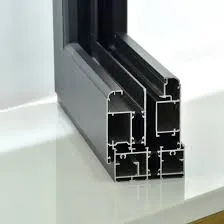ornamental iron casting
The Art and Craft of Ornamental Iron Casting
Ornamental iron casting has been a revered art form for centuries, blending functionality with aesthetic appeal. This ancient craft is not just about creating sturdy ironwork; it’s about the celebration of creativity, heritage, and timeless design. In its essence, ornamental iron casting allows for the transformation of raw metal into intricate pieces that can serve various purposes, from architectural features to sophisticated décor.
Historical Context
The roots of ornamental ironwork can be traced back to ancient civilizations, where blacksmiths played a crucial role in society. The techniques of forging and casting were refined over time, and during the Renaissance, ornamental ironwork began to flourish. Iron became a favored material due to its strength and flexibility, allowing artisans to create stunning gates, railings, and furniture adorned with intricate designs.
In the 19th century, as the Industrial Revolution took hold, ornamental ironwork gained more prominence. Mass production techniques emerged, yet skilled craftsmen continued to produce unique pieces. Cast iron became particularly popular for its ability to be molded into elaborate shapes and patterns, ensuring a seamless blend of artistry and utility.
The Casting Process
Ornamental iron casting involves several steps that demand precision and artistry. Initially, a design is conceptualized, often taking inspiration from nature, history, or architectural styles. This design is then transformed into a three-dimensional model using materials like clay or wax, which will serve as a pattern for the casting process.
Once the model is prepared, it is used to create a mold. The mold is typically made from sand mixed with resin, which allows for fine details to be captured during the casting. After the mold is prepared, molten iron is poured into it. This crucial step requires expert handling, as the iron must be heated to a temperature exceeding 2,500°F to ensure it flows properly into all parts of the mold.
After the iron cools and solidifies, the mold is broken away, revealing the newly cast ornament. The final piece often undergoes various finishing processes, including cleaning, grinding, and painting, to enhance its appearance and protect it from rust and corrosion. Each piece is usually unique, showcasing the skill and artistry of the craftsman, making it a coveted item in the world of design.
ornamental iron casting

Applications of Ornamental Iron Casting
Ornamental iron casts are used in a variety of applications, reflecting both functional and decorative aspects. Architects often incorporate iron castings into buildings, using them for railings, balconies, and gates. The intricate patterns and designs provide not only safety and security but also enhance the visual appeal of a structure, blending seamlessly with different architectural styles.
In addition to architecture, ornamental iron casting plays a significant role in interior design. Furniture pieces such as tables and chairs often feature ornamental ironwork elements, suggesting elegance and sophistication. Smaller items, such as candle holders, wall art, and garden décor, are also commonly crafted from ornamental iron, showcasing the versatility of the material.
The Revival of Traditional Techniques
In recent years, there has been a resurgence of interest in traditional crafts, including ornamental iron casting. As consumers seek unique pieces that tell a story, artisans are returning to their roots, emphasizing craftsmanship over mass production. This revival not only preserves heritage techniques but also supports sustainable practices within the craft industry.
Moreover, contemporary artists are experimenting with ornamental iron casting, pushing the boundaries of design and form. By integrating modern aesthetics with traditional methods, they create innovative works that resonate with today’s audience while honoring the craft’s rich history.
Conclusion
Ornamental iron casting is more than a mere craft; it is a testament to human creativity and ingenuity. From its historical roots to its modern applications, ornamental ironwork continues to captivate audiences with its beauty and functionality. As we appreciate these artistic creations, it is crucial to recognize the skill and dedication involved in each piece, ensuring that this timeless art form thrives for future generations to admire and enjoy. In a world where mass-produced items dominate, ornamental iron casting stands as a beacon of individuality, craftsmanship, and cultural heritage.
-
Wrought Iron Components: Timeless Elegance and Structural StrengthNewsJul.28,2025
-
Window Hardware Essentials: Rollers, Handles, and Locking SolutionsNewsJul.28,2025
-
Small Agricultural Processing Machines: Corn Threshers, Cassava Chippers, Grain Peelers & Chaff CuttersNewsJul.28,2025
-
Sliding Rollers: Smooth, Silent, and Built to LastNewsJul.28,2025
-
Cast Iron Stoves: Timeless Heating with Modern EfficiencyNewsJul.28,2025
-
Cast Iron Pipe and Fitting: Durable, Fire-Resistant Solutions for Plumbing and DrainageNewsJul.28,2025
-
 Wrought Iron Components: Timeless Elegance and Structural StrengthJul-28-2025Wrought Iron Components: Timeless Elegance and Structural Strength
Wrought Iron Components: Timeless Elegance and Structural StrengthJul-28-2025Wrought Iron Components: Timeless Elegance and Structural Strength -
 Window Hardware Essentials: Rollers, Handles, and Locking SolutionsJul-28-2025Window Hardware Essentials: Rollers, Handles, and Locking Solutions
Window Hardware Essentials: Rollers, Handles, and Locking SolutionsJul-28-2025Window Hardware Essentials: Rollers, Handles, and Locking Solutions -
 Small Agricultural Processing Machines: Corn Threshers, Cassava Chippers, Grain Peelers & Chaff CuttersJul-28-2025Small Agricultural Processing Machines: Corn Threshers, Cassava Chippers, Grain Peelers & Chaff Cutters
Small Agricultural Processing Machines: Corn Threshers, Cassava Chippers, Grain Peelers & Chaff CuttersJul-28-2025Small Agricultural Processing Machines: Corn Threshers, Cassava Chippers, Grain Peelers & Chaff Cutters












